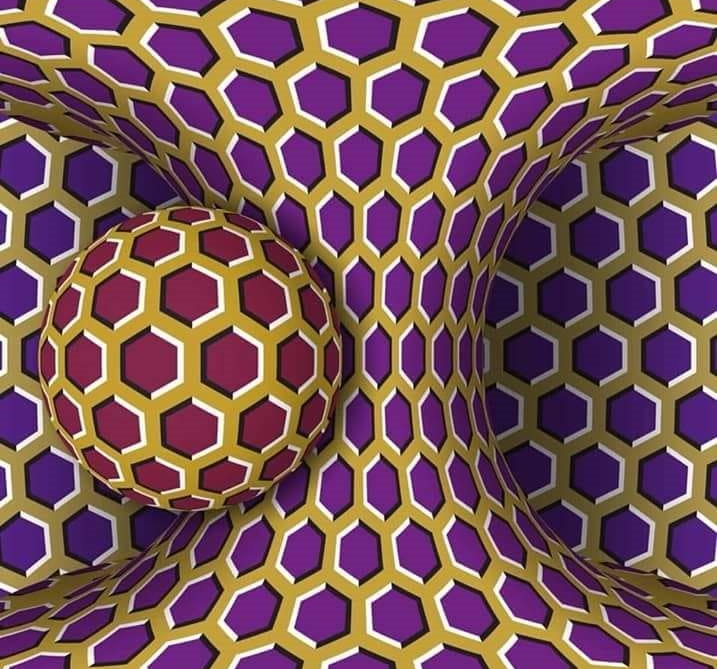
A cognitive neuroscientist explains that the biological reason the image 'moves' is because the
V5 (middle temporal visual area) part of your brain –
devoted to motion processing – activates or fires due to the
V4 part of your brain –
devoted to colour and shape – becomes overstimulated.
In fact, V4 neurons are saturated so much that the resting firing frequency of middle temporal neurons is interpreted as an actual sensory signal. The effect of this illusion strictly depends on several factors, namely on the receptive field sizes (the illusion changes as a function of viewing distance), V4 preference for spirals and spheres, and the middle temporal involvement in 3D and
stereopsis. It is a very complex interaction, that rarely lead to such illusions.